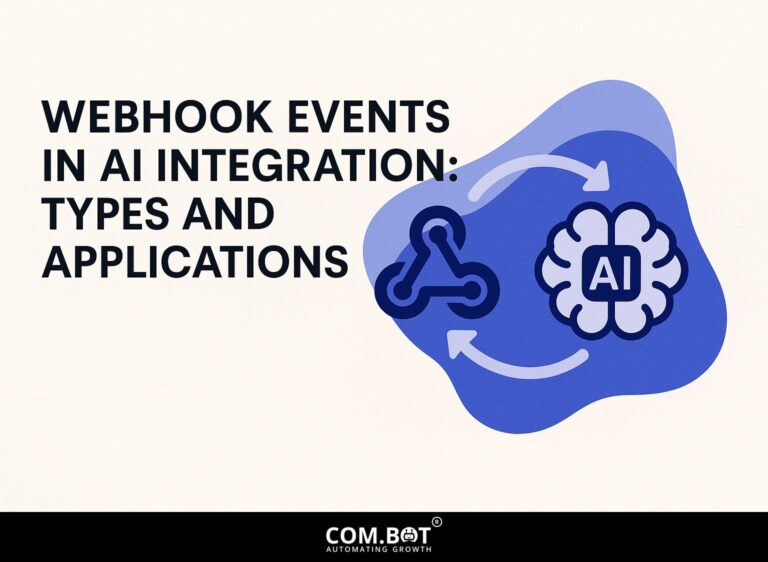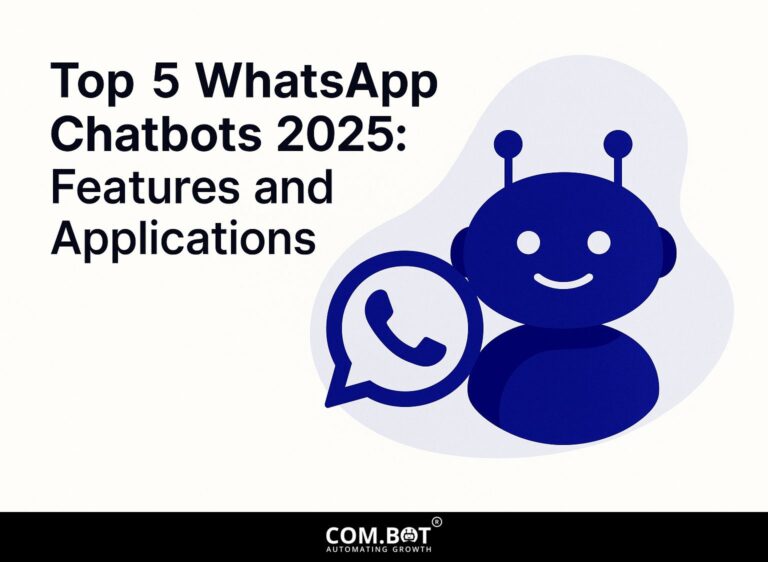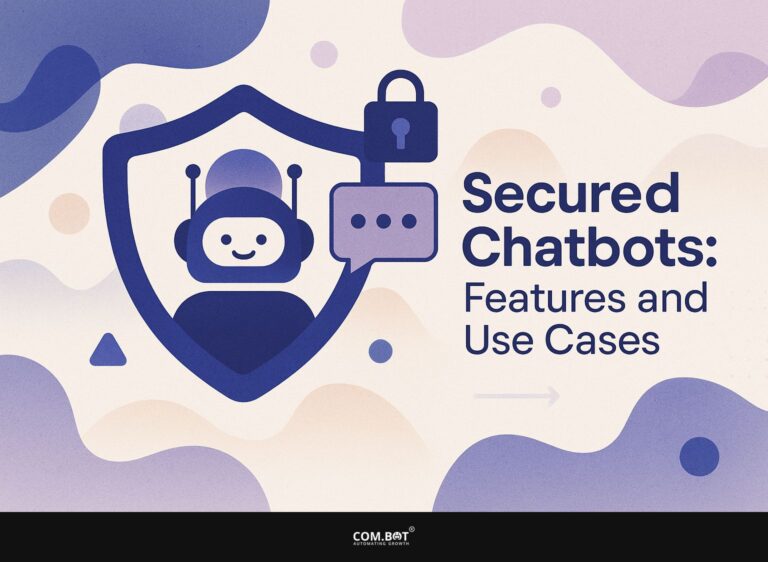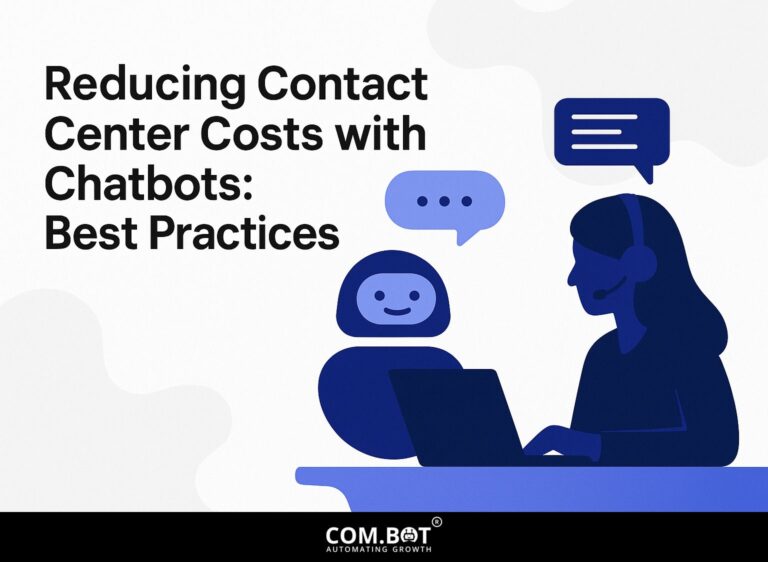Rule-Based vs. AI Bots: Differences and Use Cases
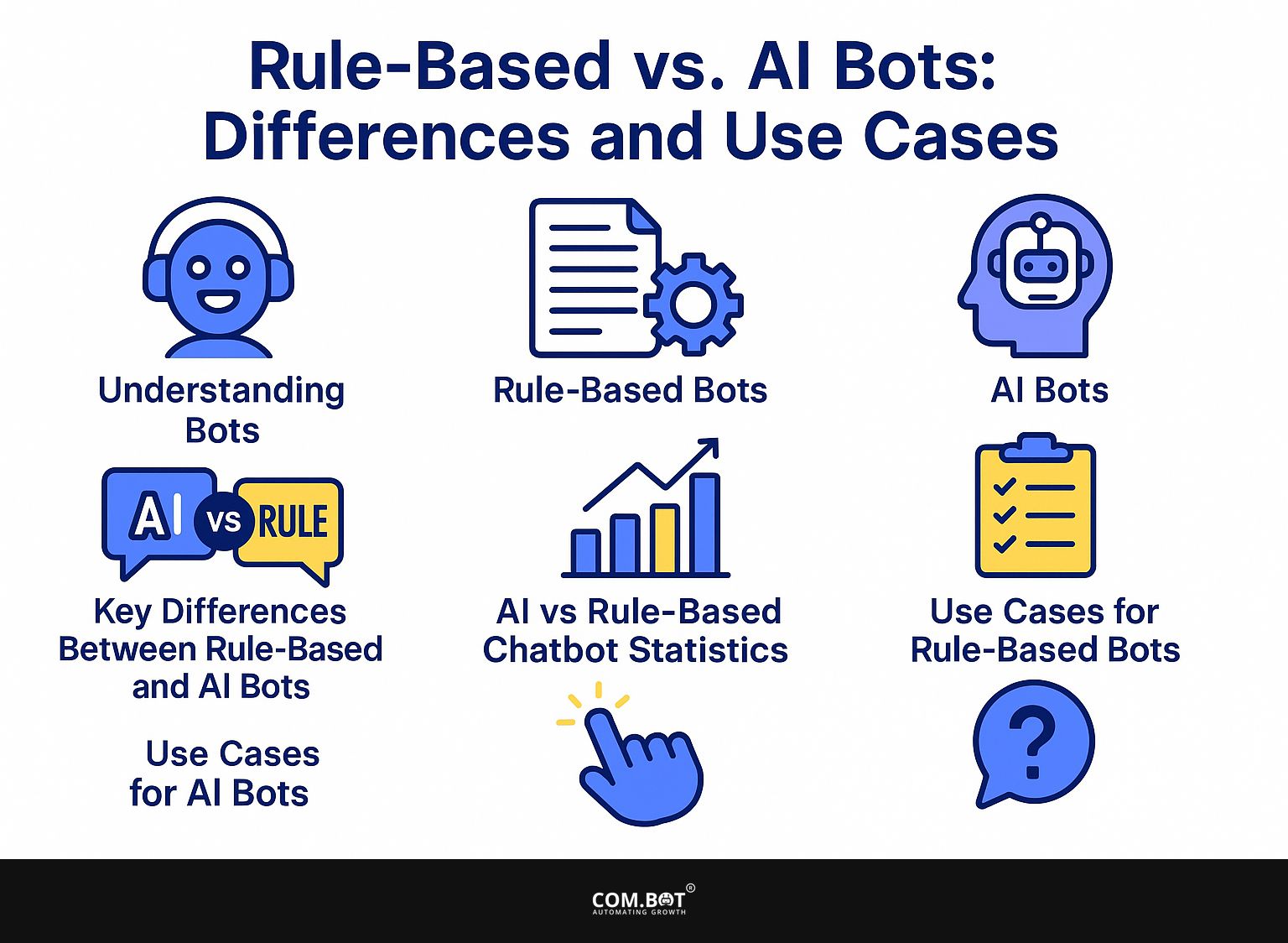
In today’s digital landscape, bots have become essential tools for businesses and individuals alike. However, bots vary in quality and features.
This article explores the fascinating world of bots, distinguishing between rule-based and AI-driven variants. It breaks down their definitions, functionalities, and the advantages and disadvantages of each type. Real-world examples show how various industries use these technologies. Join us as we explain the features that define these digital assistants and their impact on various applications.
Key Takeaways:
- Rule-based bots follow a set of predetermined rules while AI bots use machine learning algorithms to make decisions.
- Rule-based bots work well for easy and repeated tasks, while AI bots perform better in complicated and changing situations.
- AI bots can keep learning and getting better, which makes them useful for areas like healthcare and customer service.
- 1 Understanding Bots
- 2 Rule-Based Bots
- 3 AI Bots
- 4 Key Differences Between Rule-Based and AI Bots
- 5 AI vs Rule-Based Chatbot Statistics
- 6 Use Cases for Rule-Based Bots
- 7 Use Cases for AI Bots
- 8 Frequently Asked Questions
- 8.1 1. What are the main differences between rule-based bots and AI bots?
- 8.2 2. What are some use cases for rule-based bots?
- 8.3 3. How do AI bots differ from rule-based bots in terms of complexity?
- 8.4 4. What are some industries that can benefit from AI bots?
- 8.5 5. Can rule-based and AI bots work together?
- 8.6 6. What are the advantages of using AI bots over rule-based bots?
Understanding Bots
Knowing about bots is important as businesses increasingly use technology to improve customer connections and simplify service tasks.
Bots, like AI chatbots and rule-based chatbots, play a big role in customer service. They use AI for conversations and natural language processing to allow smooth user interactions.
See also: Com.bot’s 24/7 AI Support Bot for an example of how businesses can maintain continuous interaction. These virtual assistants give fast replies according to what users need, making things easier for users and cutting down on the need for human staff. As machine learning advances, these bots are becoming more capable, becoming useful tools for businesses of all sizes.
What are Bots?
Bots are computer programs created to do certain tasks, often chatting with people. They can be grouped into different types, such as rule-based chatbots that follow set scripts and AI chatbots that use machine learning to get better at responding over time.
Rule-based chatbots function using a simple decision-tree method, providing users with replies based on a predetermined set of rules. These bots are ideal for simple queries and structured interactions, such as FAQs.
AI chatbots differ from other systems because they use natural language processing to grasp various speech patterns and provide thorough responses. Virtual assistants like Amazon Alexa and Google Assistant are AI chatbots that handle tasks such as playing music and controlling devices in a connected home.
These advanced chatbots make it easier to talk and solve problems, which greatly improves customer interaction and the experience for users.
Rule-Based Bots
Rule-based bots are chatbots that work with a set of prewritten scripts and decision paths. They give answers based on exact user inputs.
These bots are great in organized settings, like customer service, where interactions can be predicted and planned to serve user needs well. Additionally, for those interested in enhancing customer interactions, exploring Com.bot’s Smart FAQ Bot might provide valuable insights.
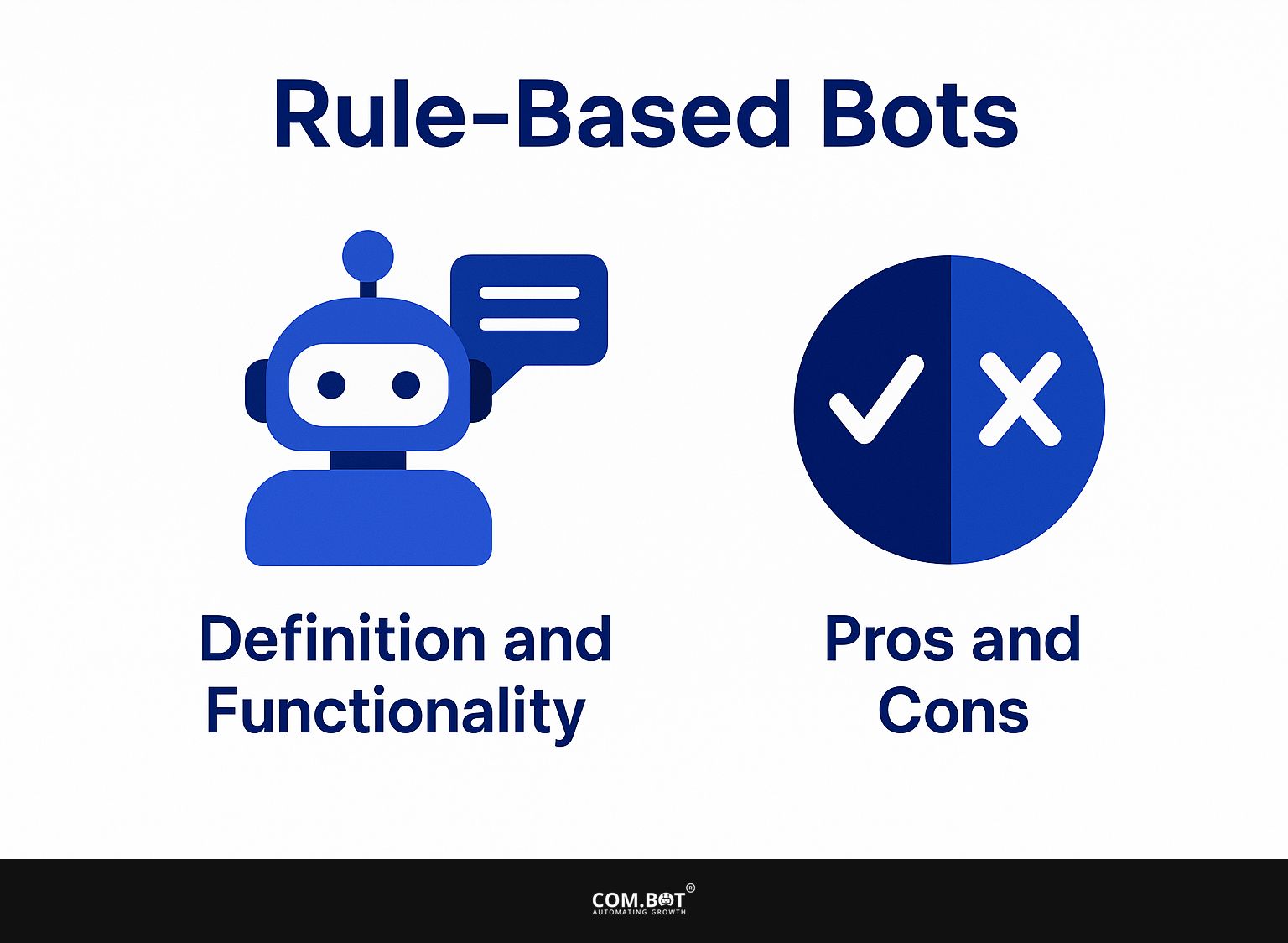
1. Definition and Functionality
Rule-based chatbots operate by following predefined scripts and decision trees, enabling them to provide specific answers to user queries in a structured manner. These advanced systems function by examining important phrases and words that users provide to choose from a list of prepared answers.
For example, in customer service, a rule-based chatbot can quickly handle frequent questions like checking account balances or giving details about product availability.
When a user asks about store hours, the chatbot uses its pre-written answer to quickly provide the correct information. This focused approach allows businesses to handle a high volume of routine inquiries seamlessly, ensuring that human agents can dedicate their time to more complex issues that require personal attention.
2. Pros and Cons
Rule-based chatbots offer a range of benefits, particularly in customer service and task-oriented applications, but they also come with limitations that businesses must consider when implementing them.
These chatbots are generally easy to install, letting companies use them fast without needing a lot of programming skills, which can save a lot of money.
For example, they can quickly guide users through FAQs, help with booking appointments, or manage basic transactions by following set logical steps. These chatbots have trouble in complicated situations where users need exact replies or specific answers, as they find it hard to handle unexpected questions or different wording.
When users have specific questions or need assistance, basic systems may not suffice, requiring more advanced chat programs.
AI Bots
AI bots, built with machine learning and natural language tools, are the new type of chatbots that can grasp and reply to what users ask in a way that feels more like talking to a person.
These chat systems pay attention to how users engage with them to improve their responses, which enhances customer service. For an extensive analysis of this trend, our deep dive into the benefits of AI WhatsApp bots examines the various ways these systems can be utilized effectively.
1. Definition and Functionality
AI chatbots use natural language processing and machine learning to grasp what users mean and have useful conversations. This makes them very effective in many uses. These advanced technologies help chatbots understand human language, letting them give appropriate answers based on context, emotion, and specific questions.
For example, in customer service, chatbots can quickly address common inquiries, troubleshoot issues, or escalate complex problems to human representatives when necessary.
In e-commerce, they make shopping better by giving customized recommendations and helping with order processing, making shopping easier. As these tools develop, they get better at learning from interactions, which increases user engagement.
2. Pros and Cons
AI chatbots offer benefits like improved customer communication and personalized experiences. But, they also have some downsides that businesses should consider. These intelligent systems adjust their communication style based on user behavior, offering a more customized experience than standard bots.
By using natural language processing, they can grasp and reply to questions in a more casual way, which makes them very good at improving user satisfaction.
Creating high-level AI chatbots needs plenty of time and top-quality data so they can provide accurate and helpful answers. When quick solutions and subtle communication are required, AI chatbots often perform better than traditional methods, highlighting their usefulness in today’s customer service settings.
Key Differences Between Rule-Based and AI Bots
The main differences between rule-based and AI chatbots are in their technology and abilities, which influence how well they handle customer service needs.
AI vs Rule-Based Chatbot Statistics
AI vs Rule-Based Chatbot Statistics
Chatbot Usage and Preferences: Usage and Customer Preference
Chatbot Usage and Preferences: Business and Marketing Impact
The AI vs Rule-Based Chatbot Statistics give a detailed explanation of how chatbots are used and chosen in different industries, and how they affect business and marketing plans. These statistics highlight the significant role chatbots play in customer interaction and cost efficiency, showcasing their growing importance in digital communications.
Chatbot Usage and Preferences reveal that by 2020, 85% of interactions were completed without human agents, signifying the efficiency and reliability of chatbots in handling customer queries autonomously. This number shows that more people are trusting machines to do jobs that people used to do by hand.
- Time-saving Preferences: 54% of consumers prefer chatbots for their time-saving benefits, indicating that customers value quick, concise responses. Additionally, 71% use chatbots for faster solutions This backs up the idea that quick service is very important for keeping customers happy.
- Millennial Engagement: With 40% of millennials engaging daily, chatbots are particularly popular among younger demographics who are accustomed to digital interactions.
- Messaging Preferences: 56% of users prefer messaging over calls for customer service, emphasizing the shift towards text-based communications which are perceived as more convenient and less intrusive.
Business and Marketing Impact demonstrates the strategic advantages chatbots offer: 300,000 chatbots on Facebook Messenger highlight their widespread adoption for direct communication channels with customers. Businesses save on operational costs, with 30% cost savings through chatbot adoption These make them a financially appealing choice.
Furthermore, 46.7% of brands run influencer campaigns on Instagram “”, showing how AI tools work with social media plans to improve interaction and widen audience.” This mix of chatbots and influencer marketing shows a current method in online marketing, where direct and quick communication is essential.
In summary, the AI vs Rule-Based Chatbot Statistics illustrate the growing preference for chatbots in customer service due to their efficiency and cost-effectiveness. Their integration into social media platforms and digital marketing campaigns further strengthens their role as essential tools in contemporary business strategies.
Technology and Capabilities
Rule-based chatbots operate using predefined guidelines and scripts, while AI chatbots use technologies such as machine learning and natural language processing to improve their functions.
This fundamental difference means that rule-based chatbots operate within a limited scope, responding only to specific user inputs and often resulting in frustrating experiences when faced with unexpected queries.
AI chatbots differ from traditional methods because they are built to understand situations and can handle a wide range of customer inquiries effectively.
For businesses, using AI-based solutions can result in better customer satisfaction and lower running costs, as they can manage many interactions without needing human help all the time. This change in chatbot technology improves how users interact and gives important data, helping companies improve their customer service plans over time.
Use Cases for Rule-Based Bots
Bots that follow specific rules are commonly used in different business sectors. They provide good solutions for set tasks and common questions, especially in customer service.
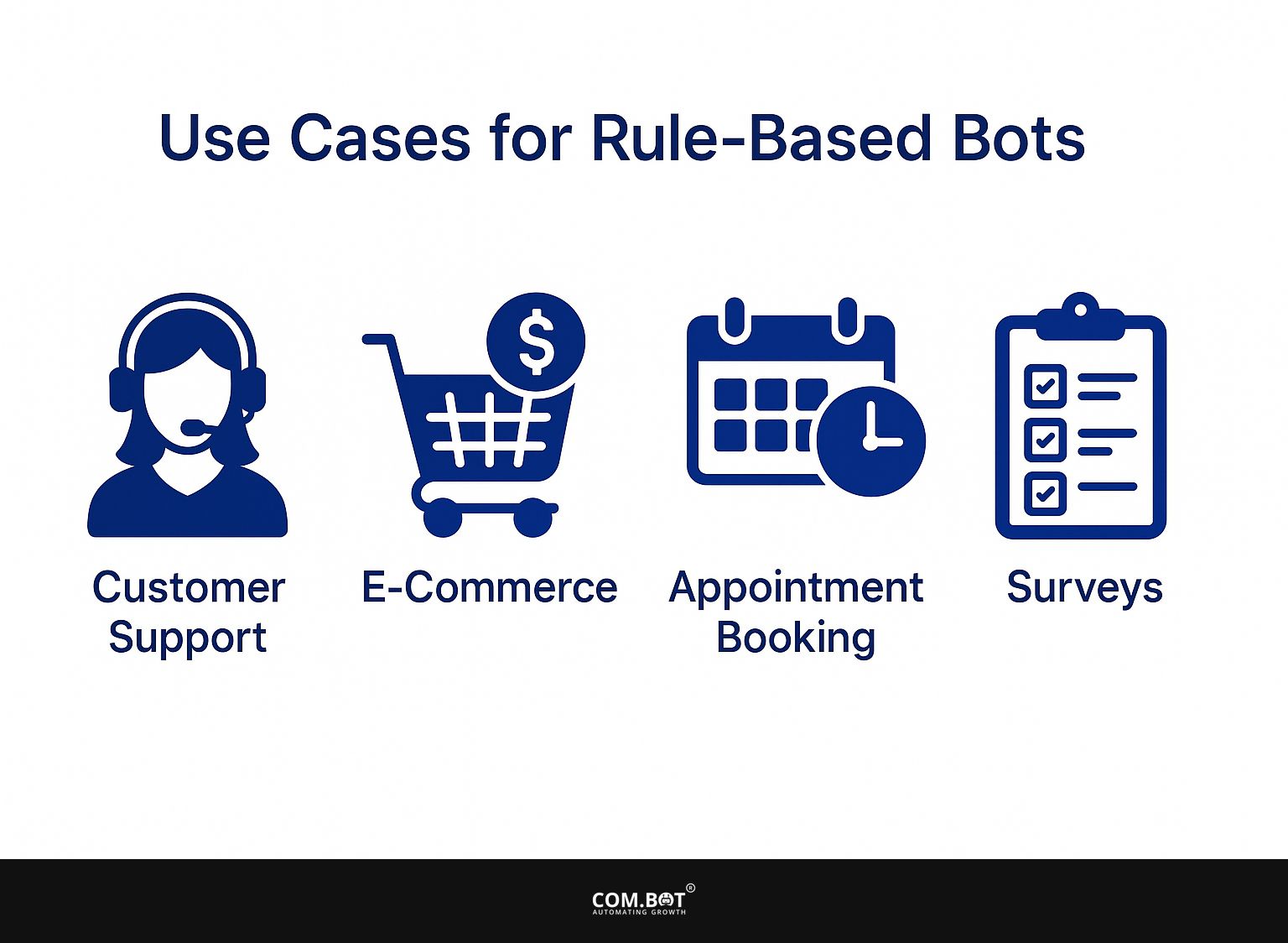
Examples of Industries and Applications
Rule-based chatbots find applications in various industries such as healthcare and e-commerce, where they serve as effective customer service agents and FAQ resources.In healthcare, these chatbots help patients by giving details about office hours, providing pre-screening forms, and aiding in booking appointments.
For example, a hospital could use a chatbot to make scheduling appointments easy, allowing patients to check available times without needing to talk to someone.
In online shopping, these automatic tools help customers by keeping track of their orders, answering questions about deliveries, and managing returns.Their organized answers help avoid confusion and make the user experience better by offering fast and correct information. This is very helpful in keeping customers happy.
Use Cases for AI Bots
AI bots are being used more and more in many industries because they can improve customer engagement and offer customized interactions, showing they can be used in many ways.
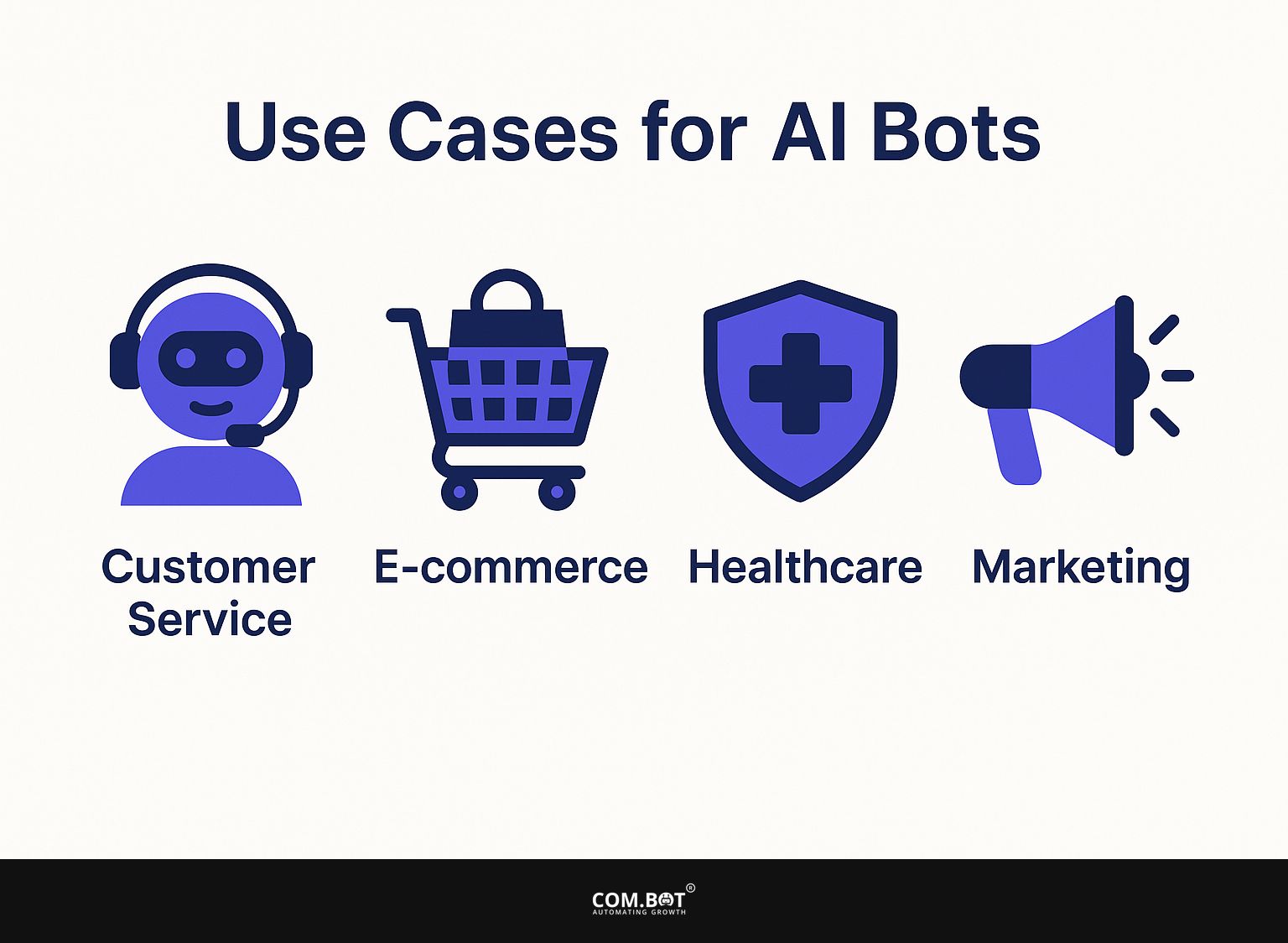
Examples of Industries and Applications
AI chatbots are used in areas like online shopping, finance, and medical services, where they improve customer service and make processes more efficient.
For example, in online shopping, these tools can help customers during their purchase by giving fast answers to product questions and guiding users through detailed catalogs.
In banking, AI chatbots help customers check their account balance, receive transaction alerts, and manage their money. They also give personalized advice for better handling money.
Chatbots in healthcare schedule patient appointments, assess symptoms, and provide medication alerts, ensuring patients receive care on time.
Through their ability to operate in real-time, chatbots effectively reduce response times and significantly improve user satisfaction across these sectors.
Frequently Asked Questions
1. What are the main differences between rule-based bots and AI bots?
Rule-based bots operate using preset rules and responses, whereas AI bots employ machine learning and natural language processing to evolve and respond based on user interactions.
2. What are some use cases for rule-based bots?
Rule-based bots are commonly used for simple tasks such as answering FAQs, providing basic customer service, and automating repetitive tasks.
3. How do AI bots differ from rule-based bots in terms of complexity?
AI bots are generally more complex than rule-based bots, as they require advanced algorithms and programming to understand and respond to user inputs in a human-like manner.
4. What are some industries that can benefit from AI bots?
AI bots have a wide range of applications and can be beneficial in industries such as healthcare, finance, e-commerce, and customer service.
5. Can rule-based and AI bots work together?
Yes, it is possible for rule-based and AI bots to work together in a complementary manner. Rule-based bots handle simple tasks, while AI bots manage more complex and personalized interactions.
6. What are the advantages of using AI bots over rule-based bots?
AI bots can improve over time, making them more capable of performing various tasks. They can better manage language inputs from users, making them easier for customers to use.

